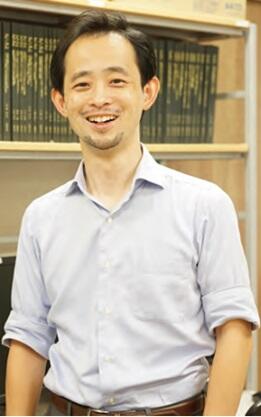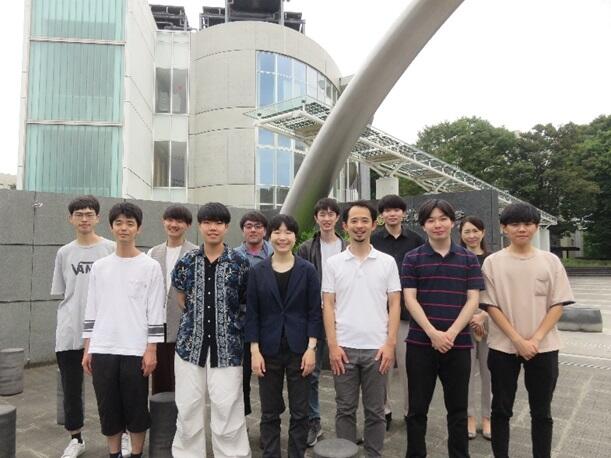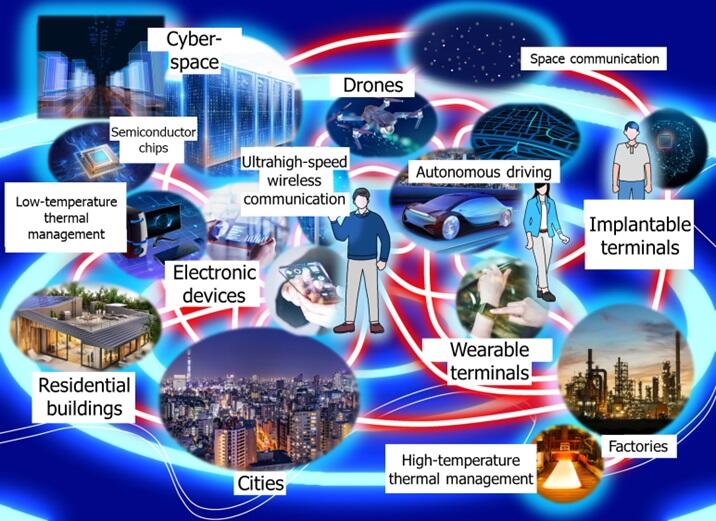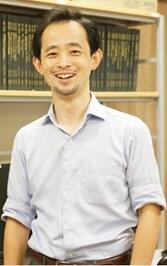
Associate Professor, Division of Advanced Electrical and Electronics Engineering, Institute of Engineering, Tokyo University of Agriculture and Technology
Q1: What led you to your current specialty?
A1. Original research that no one else is doing
I have loved radio-controlled cars since I was a child, and I have been fascinated by the way things are controlled by radio waves. When I took a class on electromagnetic waves in university, I was inspired for the first time to become a researcher. I found it refreshing and interesting to learn about the mechanisms of radio waves and light, which are invisible to the naked eye, and their use in smartphones and other devices. Thereafter, I decided to join a research laboratory that investigated millimeter waves and microwaves, which are types of electromagnetic waves.
Before university, studying tended to be centered on memorization, but there was an atmosphere of freedom in university research, where "students did not have to force themselves to find answers." For me, it was fun to keep thinking about difficult problems for which I had no answers. As such a task is part of researchers' job and I can contribute to the world by performing this task, I wanted to become a researcher.
"Terahertz waves," which are my primary specialty, are a type of electromagnetic wave in the frequency band between radio waves and light. After obtaining doctorate degree, I realized that several researchers are working in the fields of millimeter waves and microwaves; hence, I may not win if I competed in the same field. This realization led me to think of "conducting research on a unique topic that no one else was doing." I decided to use this experience to advance my research on terahertz waves, which are known as "unexplored electromagnetic waves" and have not yet been put to practical use.

Q2. What research are you working on now?
A2. Preparation of materials with an ultrahigh refractive index and a low reflectivity
The communication standard we currently use is 5G, but terahertz waves are expected to be used in next-generation 6G and 7G communication systems. It is believed that the use of these waves will enable even larger capacity and faster communication than currently possible and that systems that store vast amounts of data and combine the real world with cyberspace will become practical.
However, the propagation of terahertz waves, which correspond to the frequency band called the terahertz gap between radio waves and light, over long distances is challenging because of their high absorption by the atmosphere. In the past, lenses were used to enhance the directivity of these waves. However, the sizes of such lenses must be on the order of millimeters or centimeters for nano-sized semiconductors (nano is one billionth), making miniaturization difficult.
To address this issue, we independently developed a "metasurface," an artificial structural material that operates in the terahertz wave band and has an ultrahigh refractive index and low reflectance for polarization in one direction. Under the FOREST program, we have been conducting research on the further development of this metasurface to apply it to meta-lens antennas that can control terahertz waves, as well as on its integration with light sources with even higher frequencies. Through this, we aim to achieve the ultrahigh efficiency of terahertz devices, which will be necessary for next-generation communications technologies.

Q3. What advice would you give to future generations?
A3. Pave the way without the fear of failure
Soichiro Asano, a businessman, left us with the phrase: "Fall nine times, stand up ten." I first discovered this phrase in junior high school, and it made me realize the fun of enjoying even failure and taking on new challenges. When my project was rejected several times before being selected by PRESTO in 2018, I felt frustrated, but I also realized that "I have to find something unique that sets me apart from others." I am often inspired by researchers from different fields at PRESTO and FOREST, and the relationships I have developed and experiences I have gained there have been a great asset to me. In the future, I want to take advantage of such encounters to popularize the terahertz devices that we have developed across the world.
In research, even if an idea or technology seems to have no apparent use at first glance, employing it in a different field can lead to a breakthrough. If you cherish each encounter and continue your research that is useful to the world, I am sure that many people will support you. I urge you all to carve out your own unique path without the fear of failure.
(Article: Kayo Murakami)

Profile
Suzuki Takehito
Associate Professor, Division of Advanced Electrical and Electronics Engineering, Institute of Engineering, Tokyo University of Agriculture and Technology
Born in Kanagawa Prefecture. Completed doctoral studies in 2009 at the Department of Electrical and Electronics Engineering, Graduate School of Engineering, Tokyo Institute of Technology. Doctor of Engineering. Previously worked as an Assistant Professor in the Department of Electrical and Electronic Engineering, College of Engineering at Ibaraki University and as a lecturer at the same university. He assumed his current post in 2017. He was a PRESTO researcher from 2018 to 2022, and FOREST researcher since 2023.




